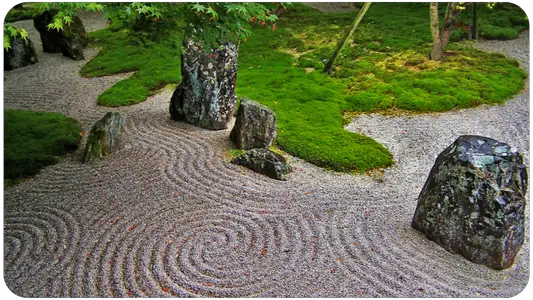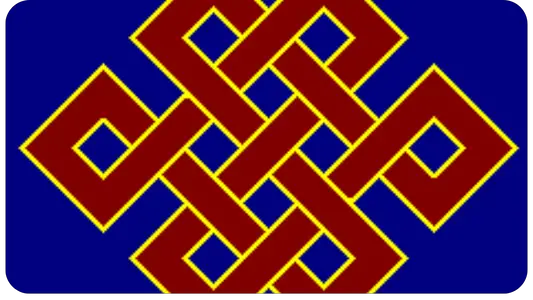The Yogācāra or Citta-mātra (mind alone) or Vijñānavāda (consciousness school), is one of the two main Mahāyāna schools of Buddhist thought. It is a school of Buddhist philosophical principles that affirms the true existence of dependent natures, but does not affirm external phenomena.
History
It flourished in India around the 3rd to 4th century until the 9th century. It was introduced in the 7th century in the Chinese Empire under the name Faxiang by Xuanzang and in the middle of the same century, spread in Japan under the name Hossō.
It is associated with the philosophers Asanga and Vasubandhu and with several sutras such as the Sandhinirmocana and the Lankavatara. The Sandhinirmocana Sutra was the fundamental sutra of the Yogachara and still remains one of its main references.
It rejects the total realism of Theravāda Buddhism and the empirical realism of the Madhyamaka school, leaning toward a more complex stance in which human-perceived reality does not exist but only appears real by virtue of the mind's ability to perceive patterns of continuity and regularity.
The central feature of Yogācāra thought is the concept of "vijñapti-mātra", often translated as "impressions only" or "appearance only" and this has been interpreted as a form of idealism or as phenomenology.
Yogācāra thinkers such as Vasubandhu argued against the existence of external objects by pointing out that we only have access to our own mental impressions, and therefore our inference of the existence of external objects is based on faulty logic.
Vasubandhu's "Vijnaptimatratasiddhi," "The proof that there are only impressions" (20 verses) begins thus:
"This world is nothing but impressions, as it manifests itself as an unreal object, as in the case of those with cataracts who see unreal hairs on the moon etc. "
According to Vasubandhu, all our experiences are like seeing hairs on the moon when we have cataracts, i.e., we project our mental images onto something "out there" when no such things exist.
Vasubandhu then uses the example of a dream to argue that mental impressions do not require that external objects (1) appear to be spatiotemporally located, (2) appear to have an intersubjective quality, and (3) appear to operate by causal laws.
That purely mental events can have causal efficacy and be intersubjective is demonstrated by the event of a wet dream and by the mass hallucinations created by the karma of certain types of beings.
Having argued that "impressions alone" is a theory that can explain our everyday experience, Vasubandhu turns to the principle of parsimony. Since we do not need the concept of external objects to explain reality, then we can completely eliminate those superfluous concepts, since they are likely to be superimposed by the mind on our concepts of reality.
Vasubandhu's intersubjective reality is the causal interaction between various mind-streams and their karma, and does not include any external physical objects. The soteriological significance of this theory is that by eliminating the concept of an external world, it also weakens the "internal" sense of the self as an observer that is supposed to be separate from the external world.
To dissolve the dualism of internal and external is also to dissolve the sense of self and other. Yogacara Sthiramati's later commentator Sthiramati explains it thus:
"There is something to grasp if there is something to grasp, but not in the absence of what is to be grasped. Where there is not something to grasp, there also follows the absence of a grasper, there is not only the absence of the thing to grasp. Hence, there arises the extra-mundane non-conceptual cognition that is objectless and object-less knower. "
Vasubandhu also attacked the realist theories of Buddhist atomism and the Abhidharma theory of svabhava. He argued that the atoms conceived by the atomists (non-divisible entities) could not come together to form larger aggregate entities and, therefore, that they were illogical concepts.
Yogācāra thinkers include Dharmapala of Nalanda, Sthiramati, Chandragomin (who debated Chandrakirti) and Śīlabhadra. Yogācāras such as Paramartha and Guṇabhadra brought the school to China and translated Yogācāra works there, where it is known as Wéishí-zōng or Fǎxiàng-zōng.
An important contribution to the East Asian Yogacara is Xuanzang's "Cheng Weishi Lun," or "Discourse on the Establishment of Consciousness Alone."
Jñānagarbha (8th century AD) and his pupil Śāntarakṣita (725-788 AD) united Yogācāra, Madhyamaka and the Dignaga school of epistemology in a philosophical synthesis known as "Yogācāra-Svatantrika-Mādhyamika".
Śāntarakṣita was also instrumental in the introduction of Buddhism and the Sarvastivadin monastic ordination lineage in Tibet, which took place at Samye monastery. Śāntarakṣita's disciples include Haribhadra and Kamalaśīla. This philosophical tradition is influential in Tibetan Buddhist thought.
Doctrines
Some of the doctrines:
Five categories of beings.
One of the most controversial teachings advocated by the Yogacara school was an extension of the teachings on seed and conscious storage.
Based on the Saṃdhinirmocana Sutra and the Latrakāvatāra Sutra, the Yogacara school postulated that sentient beings had innate seeds that would make them capable of attaining a particular state of enlightenment and no other. Thus, beings were categorized in 5 ways:
Beings whose innate seeds gave them the capacity to attain complete Buddhahood (i.e., the Bodhisattva path).
Beings whose innate seeds gave them the capacity to attain the state of a pratyekabuddha (private Buddha).
Beings whose innate seeds gave them the capacity to attain the state of an arhat.
Beings whose innate seeds had an indeterminate nature, and could potentially be any of the above.
Beings whose innate seeds were incapable of ever attaining enlightenment because they lacked wholesome seeds.
The fifth class of beings, the Icchantika, were described in various Mahayana sutras as unable to attain enlightenment, unless in some cases they had the help of a Buddha or Bodhisattva. However, this idea was heavily criticized by the followers of the Lotus Sutra (e.g., the Tiantai or Tendai schools) and their teaching of universal Buddhahood. This tension appears in East Asian Buddhist history.





